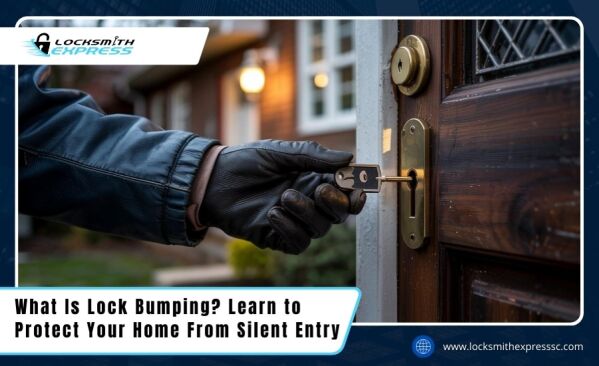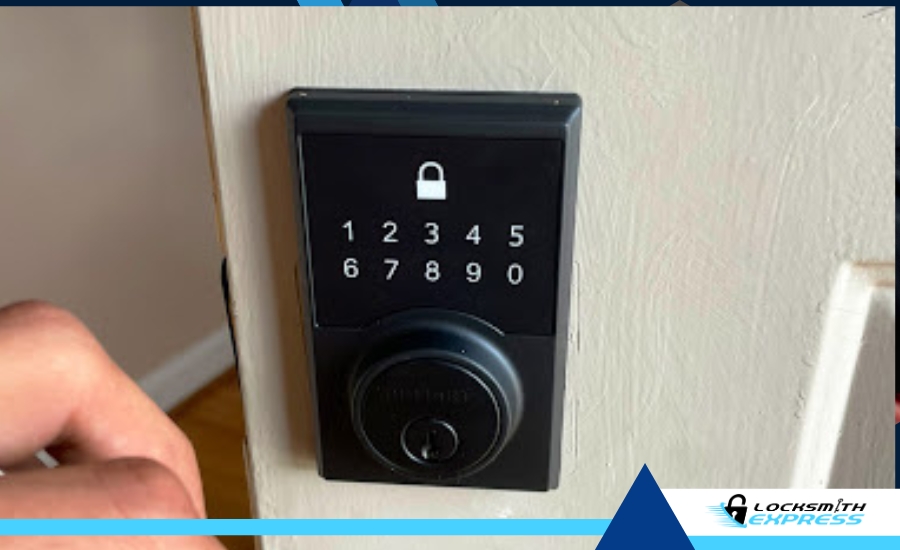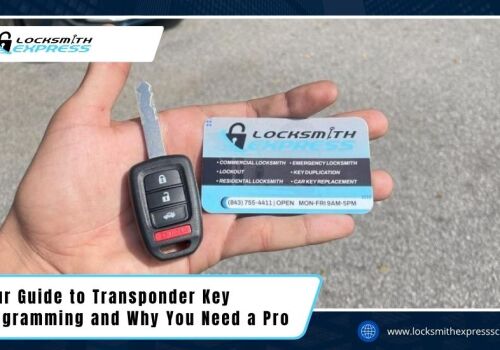What is lock bumping? It's a quiet and fast way for intruders to open a door using a bump key, and no signs of damage. The technique, often called bumping lock, targets pin tumbler locks, which are found on many homes. Since it leaves little trace, it’s a growing concern for homeowners. Knowing these locksmith tips about how lock bumping works and what steps to take can help you better protect your home.
- How Lock Bumping Works
- Why Lock Bumping Is a Security Risk
- Signs Your Lock May Be Vulnerable
- How to Prevent Lock Bumping: Practical Steps
- Upgrade to Bump-Resistant or High-Security Locks
- Install a Video Doorbell or Security Camera
- Strengthen Doors and Lock Hardware
- Use Keyless or Smart Locks
- Consult a Local Locksmith
- What to Do If You Suspect Lock Bumping
- Want to Make Your Home Safer Today?
- Frequently Asked Questions
- How common is lock bumping in break-ins?
- What does a bump key look like?
- Can renters take steps to prevent lock bumping?
- Can lock bumping trigger a home alarm system?
- Can interior doors be affected by lock bumping?
How Lock Bumping Works
To understand how to prevent lock bumping, it helps to know how it works. Most home door locks use a pin tumbler mechanism. This type of lock has a series of pins that align at a certain height when the correct key is inserted. When they line up, the lock can turn.
A bump key is a special key cut to the lowest depth for each pin in a standard lock. When it is inserted and tapped with force, usually with a small tool like a screwdriver handle, the impact causes the pins to jump. The brief movement creates a moment where the lock can be turned and opened, even though the key doesn’t match.
This method is fast, quiet, and leaves little to no sign of forced entry. That’s why it’s popular with burglars and worrying for homeowners.
Why Lock Bumping Is a Security Risk
Many homeowners think their locks are safe as long as they are not broken. But lock bumping doesn’t break locks, it opens them without a trace. Here’s why it’s a real concern:
- Easy to Learn: Tutorials and bump keys are widely available online.
- No Damage Left Behind: It often looks like the door was never touched.
- Common Locks Are Vulnerable: Most standard locks in homes can be bumped.
Because of these risks, it’s important to take steps to protect your home from lock bumping.
Signs Your Lock May Be Vulnerable
Not all locks are equally easy to bump. Some factors that make a lock more vulnerable include:
- It’s a standard pin tumbler lock
- The lock is older or hasn’t been updated in years
- It’s a brand that doesn’t offer bump-resistant models
If your locks meet one or more of these conditions, it’s a good idea to consider upgrading them.
How to Prevent Lock Bumping: Practical Steps
There are several practical ways to reduce the risk of lock bumping. Here are five key steps homeowners can take to protect their property:
Upgrade to Bump-Resistant or High-Security Locks
Standard locks are easy targets for bumping. Instead, choose locks that are specifically designed to resist this method. Look for options that are labeled as bump-resistant or high-security. Trusted brands like Medeco and Mul-T-Lock offer models that use patented keyways and security pins to stop bump keys from working.
Install a Video Doorbell or Security Camera
Visible security cameras and doorbell cameras are effective deterrents. Most burglars want to avoid being seen, especially if they’re trying to use a bumping lock technique. Installing a camera near entry points makes your home a less attractive target.
Strengthen Doors and Lock Hardware
A strong lock won’t help much if the door itself is weak. Reinforce entry doors with solid cores and make sure strike plates are secured with long screws. You can also install door armor kits to strengthen the entire frame, which helps resist both bumping and forced entry.
Use Keyless or Smart Locks
Smart locks often eliminate the keyhole, which removes the possibility of bumping. Options include keypad entry, fingerprint scanners, or locks that operate through a smartphone app. Just be sure the smart lock is from a reliable brand and installed properly.
Consult a Local Locksmith
If you’re unsure about your current lock setup, a professional locksmith can help. They’ll assess the type of locks you have and recommend upgrades that fit your needs and budget. If you’re located in North Charleston, Locksmith Express is available to assist with security assessments and lock installations.
What to Do If You Suspect Lock Bumping
If you think someone may have used a bumping lock method to enter your home:
- Check for signs like doors being unlocked when you were sure they were locked
- Look at security camera footage (if available)
- Contact your local locksmith to inspect the lock
- Consider changing your locks to a high-security type
Taking action quickly can prevent future break-ins and give you peace of mind.
Want to Make Your Home Safer Today?
Home security starts with awareness. Now that you understand what lock bumping is and how it works, you can take the right steps to keep your home safe. From upgrading to bump-resistant locks to getting expert advice, a few simple choices can make a big difference.
If you're in North Charleston, SC, Locksmith Express is here to help. We offer high-security lock upgrades and professional advice tailored to your home. Call us today for a lock check.
Frequently Asked Questions
How common is lock bumping in break-ins?
Lock bumping is more common than most homeowners realize because it leaves no clear signs. It's often overlooked in reports due to the lack of visible forced entry.
What does a bump key look like?
A bump key looks like a regular key but has uniform, shallow cuts. These cuts allow it to momentarily align all the pins in a lock when struck, unlocking it without matching the original key.
Can renters take steps to prevent lock bumping?
Yes, renters can use temporary security tools like portable door locks, add-on deadbolts, or discuss lock upgrades with landlords to reduce the risk of bumping.
Can lock bumping trigger a home alarm system?
Lock bumping itself is silent and won't trigger alarms unless the door is connected to an entry sensor. Pairing good locks with a monitored system adds another layer of protection.
Can interior doors be affected by lock bumping?
Yes, if interior doors use standard pin tumbler locks, they can be bumped just like exterior ones. It’s best to use simple privacy locks or high-security options inside.







